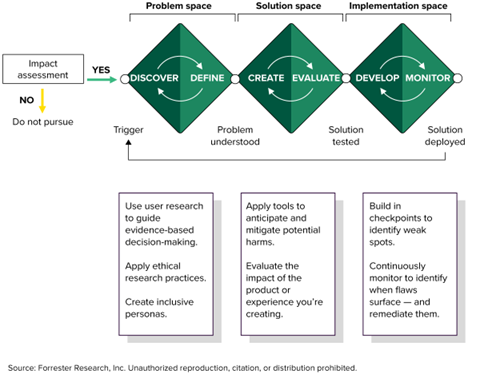Your Predictions Questions Answered: Leveraging GenAI Successfully
On January 18, we were joined by over a thousand business and technology leaders for a webinar and discussion of Forrester’s predictions for 2024. We received a lot of great questions around how generative AI (genAI) will affect customer-facing functions such as marketing, customer experience (CX), and sales; some of our answers are below. For answers to the more technical questions we received, please see the companion post GenAI For Tech Leaders: Q&A. And for even more on how genAI will shape the future, there are three deep-dive Predictions 2024 webinars you can watch: CX and digital, technology, and B2B marketing, sales, and product.
GenAI needs data to work. What should companies be doing right now to make sure that their data is ready for AI?
Companies should shore up their basic data management and governance practices. GenAI currently relies on mostly unstructured data to ground its outputs, so to support the retrieval and delivery of data to large language models, start by getting unstructured data sets managed, indexed for search, and enriched with metadata. Making sure that genAI tools can access needed data sources with proper enterprise permissions will enable their consumption of this information.
Will EU regulations on AI make their way into or change how AI is used in the USA?
Expected to become law before the spring, the European Union’s AI Act is the first binding artificial intelligence legislation. And yes, it will have a strong impact inside and outside of Europe, including in the USA, for the following reasons and more:
- The rules will have a strong extraterritorial effect, just like the EU’s General Data Protection Regulation. Companies that leverage AI in products and/or services that are directed to the European market must comply with the rules, irrespective of where their headquarters are. The rules on AI will be pervasive, as they address all actors across the “AI value chain”; this means providers, importers, and deployers of AI systems.
- As the EU’s AI Act will be the first binding regulation on AI, and with so many companies obliged to comply, it’s very possible that it will become the de facto standard for AI compliance. We expect that at least three elements of the AI Act will become the backbone of AI regulations in other geographies. Specifically, expect to see the following parts of the AI Act replicated in later legislation: 1) the risk-based approach; 2) the strong focus on regulating use cases based on the entailed risk (rather than the technology itself); and 3) the overarching transparency and governance mandate.
How do you introduce genAI into customer-facing initiatives safely in highly regulated industries such as financial services? Does it make sense to start internally first to build trust?
In highly regulated industries, it is doubly important to introduce checkpoints.
Consider Ethical Impacts Throughout The Design Process

Additionally, be brutally transparent about how and when you are using generative AI in any externally facing use case. This means, for example, setting up a narrow band of topics/situations to which an AI-driven tool can respond. When external users stray away from that narrow band, “program” the tool to respond with “I can’t answer that” or a similar answer. Forrester’s Izola tool is an example of this.
How is AI impacting what product companies bring to market?
We predict that one out of five new product launches will include AI-contributed analysis or insight that will affect chosen features or capabilities. Companies will use generative AI to analyze many more sources of customer feedback and unstructured information, gaining insights that help prioritize feature choices.
Where do companies need to modify their marketing, sales, and customer support processes to add that layer of “human touch” to the content and automation that genAI can create?
The short answer is that all AI-generated content that goes in front of prospects or customers from marketing, sales, or customer support needs to have been tested for accuracy or have a regular oversight process to eliminate the potential for mistakes and/or coherent nonsense.
How important is it to include counterpoints when you are evaluating a concept using AI so that, instead of a single question about creating something, you include input that is negative on the subject?
Prompt engineering and iteration will be key to widespread generative AI usage and success. Getting people at your organization comfortable with using generative AI is the first step. Counterpoints and negative examples help create more accuracy and nuance in the responses that models give, thereby increasing confidence and trust in results.
Within an enterprise, which business function will benefit most from AI: sales, marketing, service, human capital management, or finance?
In the short term, results from Forrester’s September 2023 Artificial Intelligence Pulse Survey place information technology as the leader of the pack. The survey asked respondents which business function they believed would benefit from AI the most. Information technology led with 30%. Most functions had a percentage somewhere in the teens: operations, customer service, R&D, and marketing and sales. Bringing up the rear was financial management with 8% and HR with 5%.
The long-term outlook for business functions is more opaque. New genAI capabilities and use cases emerge almost daily, so the future is wide open. Even if a function isn’t poised to benefit the most, it still stands to benefit.
We’re excited to answer more questions about genAI as we move through 2024. Contact your account team to learn how we can help. If you’re not yet a client, check out how Forrester Decisions supports leaders during critical times of transformation and change. The full Predictions 2024 webinar is now available on demand. You can also peruse the complimentary resources in our genAI hub.
